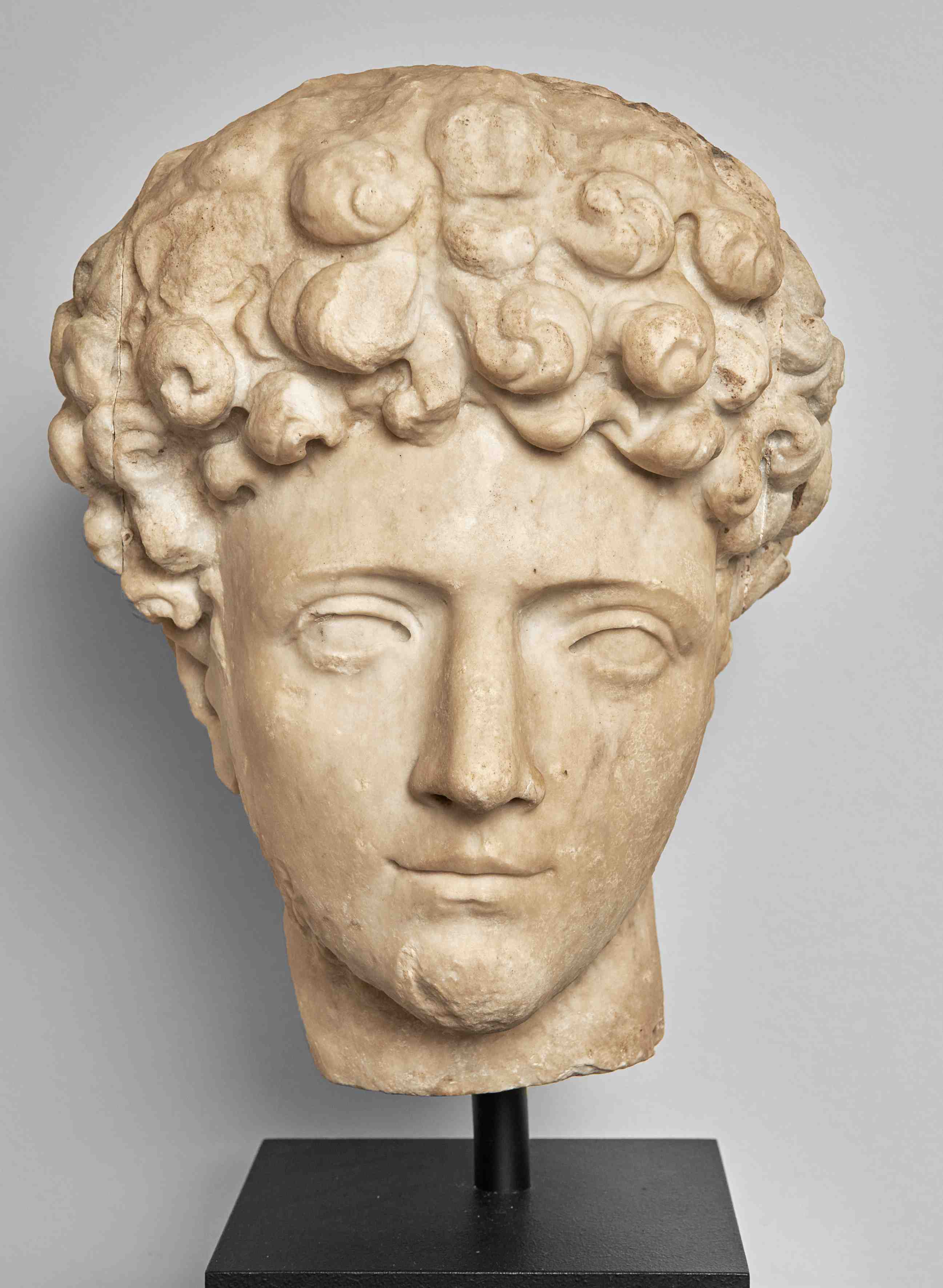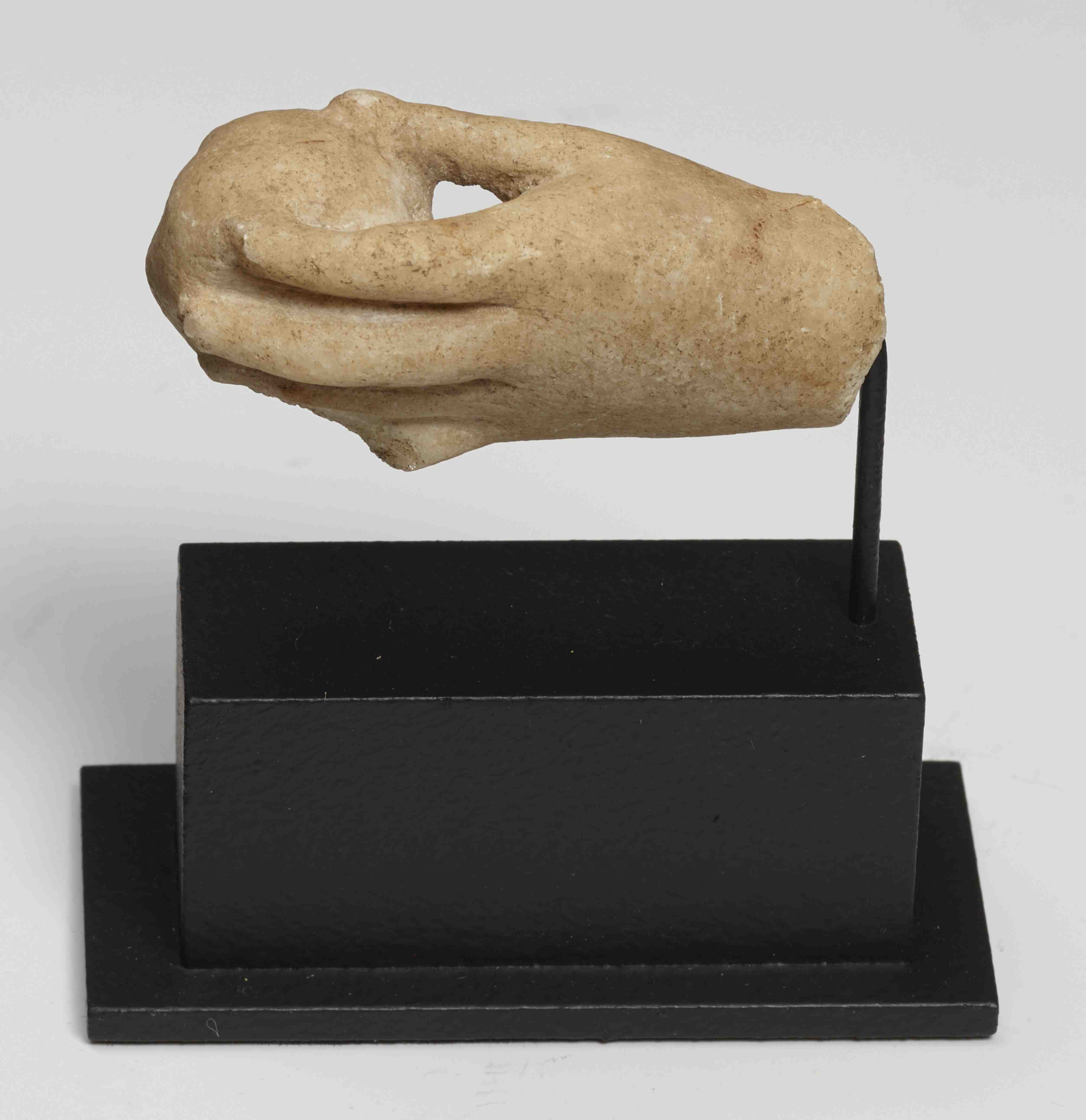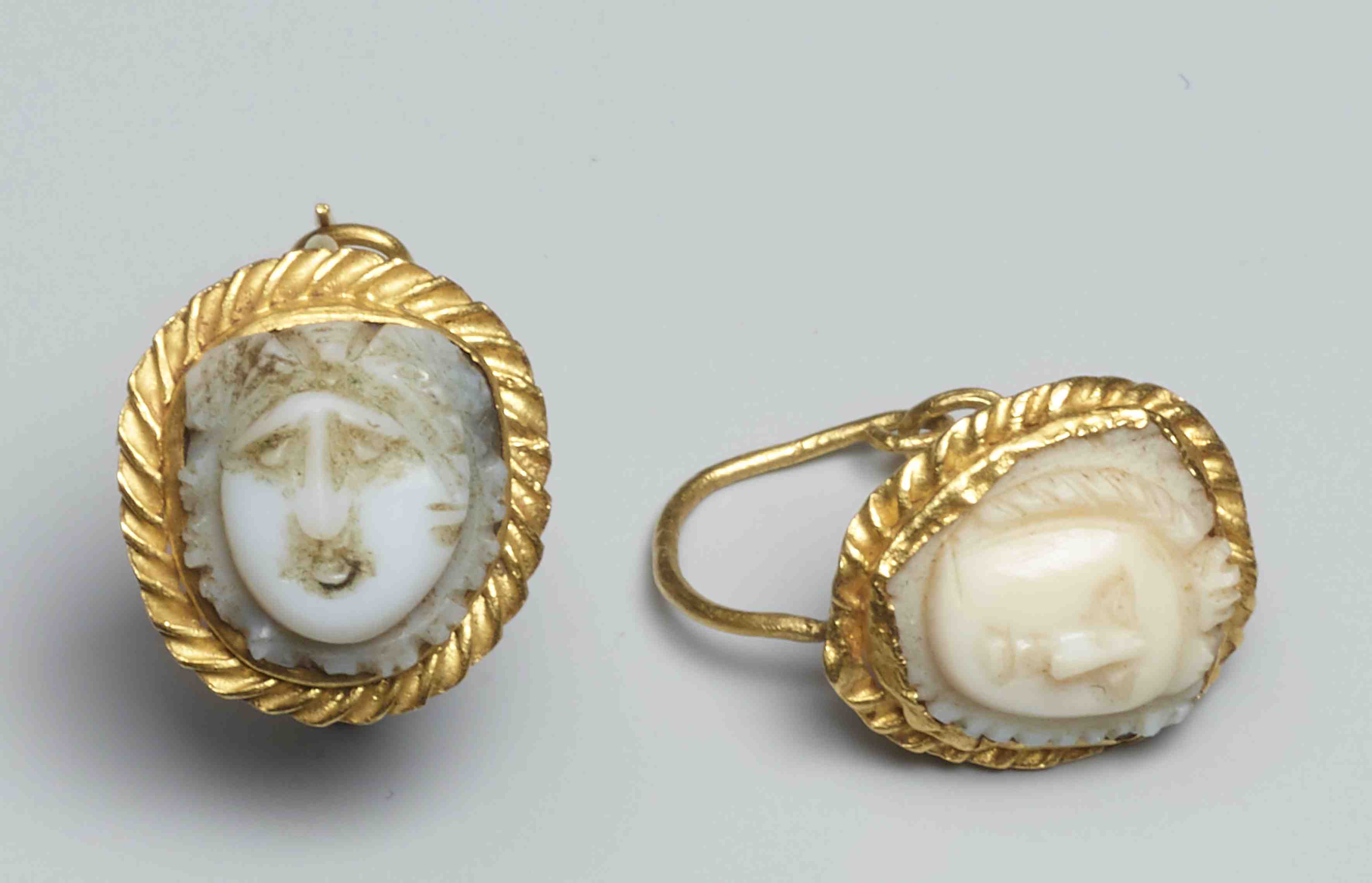‘Campana’ terracotta relief fragment
Swiss industrialist and philosopher Dr. Arnold Ruesch (1882-1929) collection, Zurich, Switzerland, thence by descent to his nephew R.S.
Collection A. Ruesch Zürich, Griechische, etruskische und römische Altertümer, Auktion in Luzern, Galerie Fischer, im Hotel national, Luzern 1. & 2. September 1936, p. 10, no 89, ill. 23 (unsold)
Private collection R.S., Switzerland
Sammlung A. Ruesch Zürich, Griechische, etruskische und römische Altertümer, Auktion in Luzern, Galerie Fischer, im Hotel national, Luzern 1. & 2. September 1936, p. 10, no 89, ill. 23
Hermann von Rohden
Die antiken Terrakotten, Bd. IV, 1, 1911
Decorated with three nude putti in high relief holding large and heavy fruit garlands, their body depicted in ¾ view, their heads slightly bent down, bordered above by a band of egg-and-dart
Description Cahn
Clay panel with part of a relief frieze depicting three Erotes bearing garlands of fruit on a plastically offset ground line. An egg-and-dart moulding at the top of the picture zone. Mould-made. Some surface losses.
Note
Campana reliefs are painted terracotta reliefs that decorated temples and other public buildings such as theatres and baths as well as private buildings, especially columbaria. They are named after the Italian collector Marchese Giampietro Campana (1808-1880) who first published these reliefs. The largest and most important workshops were located in Rome and its surroundings.









